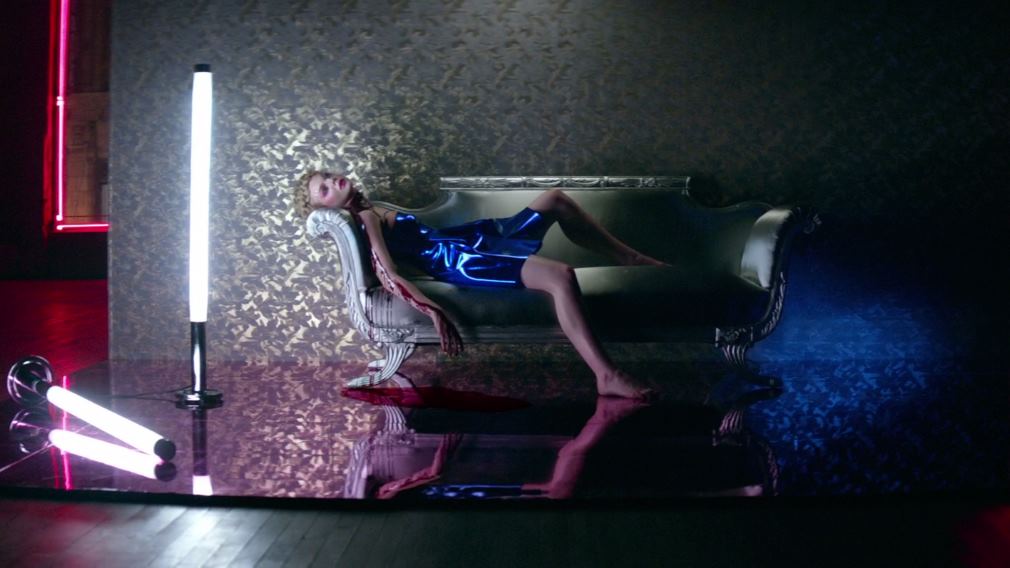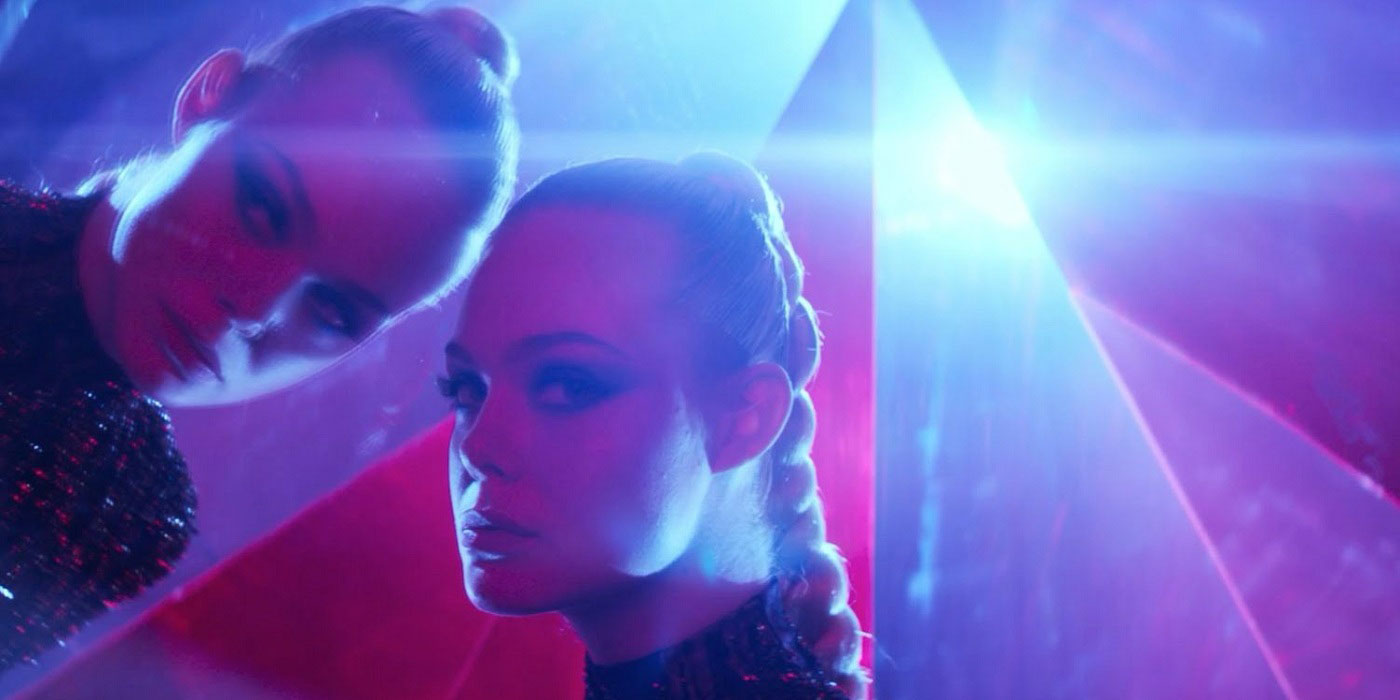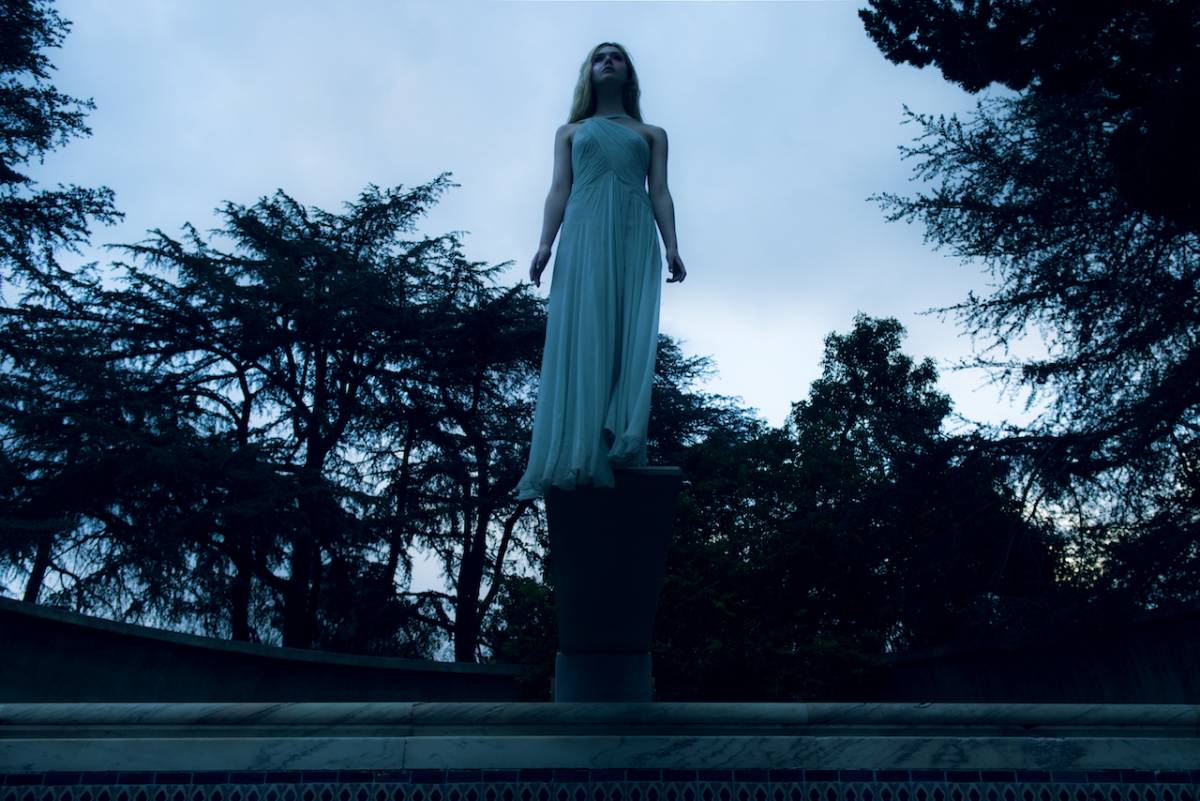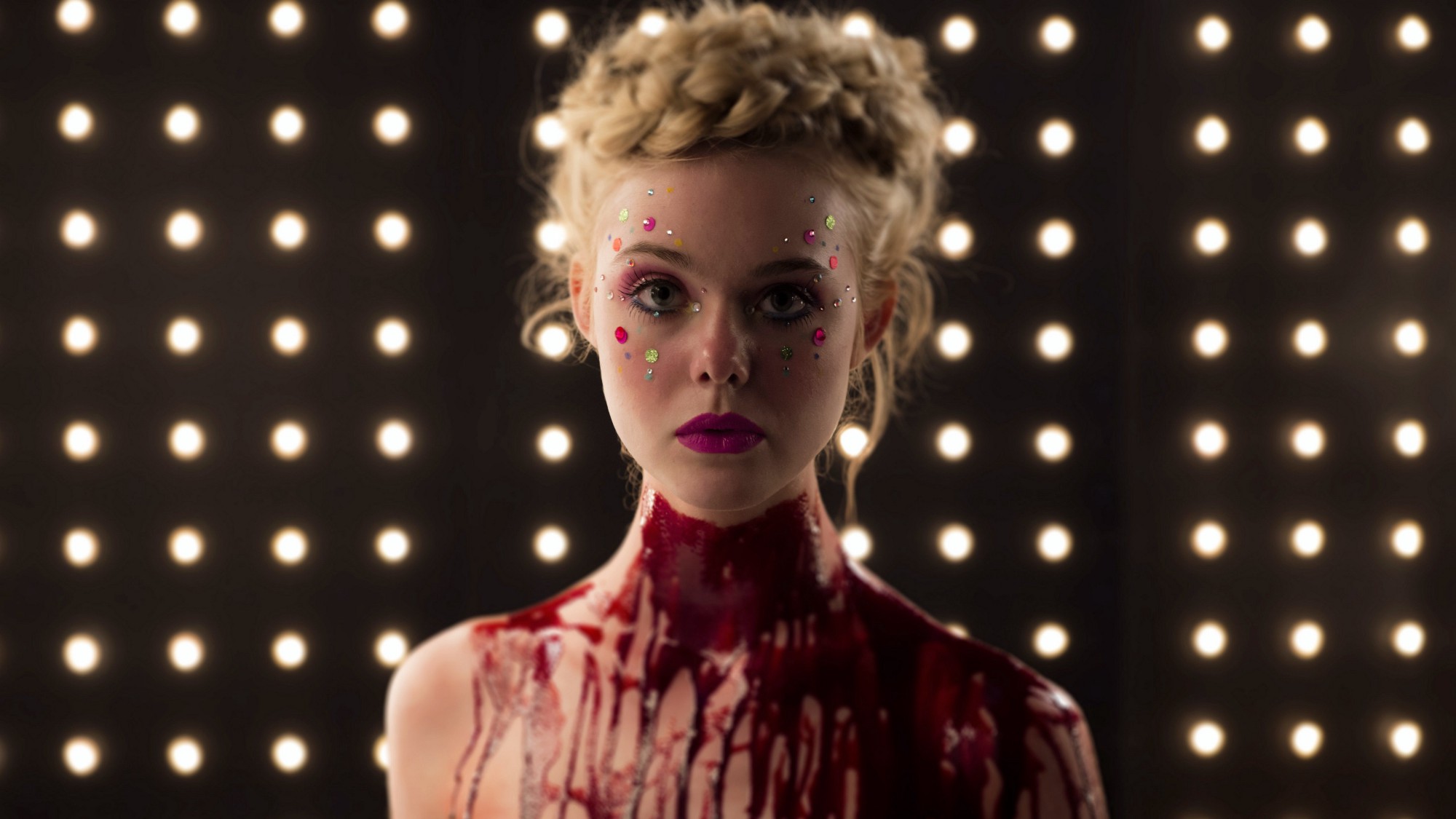4. Lighting and scenography accompany ideas

Lighting is either scarce and darkness prevails, or an illuminating whiteness and light appear; for example, at the end of the movie by the pool. During the photo shoot with Jesse, in one frame she is filmed with white “color” only behind her. Since white is not a color, it may suggest her upcoming departure into nothingness. She is naked, unprotected, subjected to the mercy or cruelty of others.
The absence of any dark tones may, contrary to intuition, provoke a similar uneasy feeling as complete darkness does. Refn’s use of lighting creates an atmosphere that is sometimes dreadful and rarely reassuring. Sometimes vivid colors emerge on the screen, only to accompany darkness that consumes the protagonist, in the same way that illumination does.
The nightclub, where the light flashes provide an unpleasant feeling of displacement, the mansion is luxurious but alien. The small motel room is a tight place that seems welcome and pleasant in the beginning, when light colors prevail, but soon becomes a place of uneasiness where horror can emerge at any given time. The pool in which Jesse eventually falls resembles a tomb. The runway is a place of conceptual imagery and not a real life location.
5. Perfection is possible only through art

Andrei Tarkovsky once said: “The artist exists because the world is not perfect. Art would be useless if the world were perfect, as man wouldn’t look for harmony but would simply live in it.” Allusions to perfection are made throughout the film and the most obvious one is the appearance of geometrical shapes.
It is often said that Jesse’s beauty is perfect. On the contrary, her beauty is destroyed and thus perfection can be achieved only through art; organic beings are prone to corrosion and decadence. Perfection, as it can exist only through artistic expression, is achievable, but comes to fruition on rare occasions.
“The Neon Demon” strives for perfection, as do all other artistic creations when executing the crucial moments in the film. Some scenes, such as the one on the runway, may be called perfect because they accomplish what was imagined in the mind of a creator, in a way that is unique and masterfully executed.
This scene is of high artistic quality; in a relatively short amount of time, it shows the transformation of the protagonist, her dual self and how the one replaces the other through seeing its own image. In the scene, a projection of herself is duplicated in a way that she sees herself, but she is also seen through the eyes of her own image. This duplication of projections slowly merges into one, portraying the emergence of a new ego structure.
6. Pushing the boundaries of artistic expression

Graphic violence is shown, a human being is devoured, an eye is regurgitated, and one character is a necrophiliac; all of this points to liberated artistic expression.
Comte de Lautreamont comes to mind first when this is discussed. His “Les Chants de Maldoror” are groundbreaking; a completely new and unexplored area of (sub)consciousness is examined and created in the mind of an artist. Marquis de Sade was imprisoned for debauchery, sodomy, and blasphemy; first in the Liberty Tower, one of the eight towers of the Bastille, and at the end, in the asylum where he was stripped of pen and paper.
Liberated expression can be an exploitation or a sublimation into art. Kōji Wakamatsu is, for example, the one who had the artistic imagination and skills needed to transcend the usual norms of artistic expression and accomplish uniqueness and coherent structure of the work. Refn is similar in this respect. Poetic exploitation may be the term to define it.
In these kinds of artistic creations, taboos are explored, and violence reaches a completely new level of unordinary and brutal. Nevertheless, it does not end up being “cheap”, a mere provocation of viewer’s morality. It strives to explain the unordinary in a manner that is even more atypical than what it strives to depict.
The result may be awe-inspiring or just obscene. In a way, it is a gamble that can pay off, or the result may be a complete disaster. The line is thin, but those who manage to succeed create great cinematic (or literary) accomplishments.
7. Toys with ideas of finding pleasure in beauty and death

Benedetto Croce thought pleasure must be excluded as the aim of art. Refn toys with that idea and the boundaries between pleasure, art, and sublimation are thin. The most vivid scene in the film that depicts this is the one where the makeup artist kisses a dead woman, while the parallel scene is an erotic one with Jesse alone.
Eroticism on the verge of “thanatos” is common; for example, when models discuss lipsticks in the bathroom, one of them mentions the one called “Red Rum”. In this scene, Refn refers to Stanley Kubrick’s “The Shining”, in which this phrase points to the word “murder” when letters are arranged differently. The discussion soon moves to sexual themes.
If pleasure is the aim of a certain work of art, Croce would say it isn’t art at all. To take an example, Botticelli’s “Primavera” was not painted to provoke pleasure in someone who views it. The film viewer seeks “jouissance”, enjoyment, and for some viewers, “The Neon Demon” delivers it.
Laura Mulvey, a feminist theorist, wrote that the film watching experience includes the supposed “male gaze” and the female characters are subjected to it. She also wrote: “It is said that analyzing pleasure, or beauty, destroys it. That is the intention of [my] article.” Films may be viewed from this perspective, but also from other viewpoints that accept enjoyment as an intrinsic part of a film watching experience. Without it, the uniqueness of film as an art form may be put into question.
Do you agree or disagree with this author’s opinion? Anyway, here’s another article which holds a totally different opinion.
Author Bio: Hrvoje Galich is a student of political science and writes expressionist poetry. He believes that Tristan und Isolde is the most beautiful artistic piece in the history of man. He loves movies by Andrei Tarkovsky, Michelangelo Antonioni, Ingmar Bergman and Shohei Imamura. He adores his cat “Meow”, the only cat in the world that can say her name.